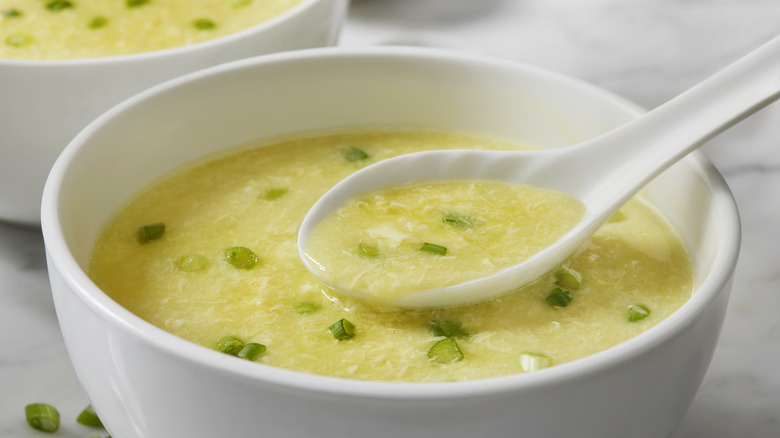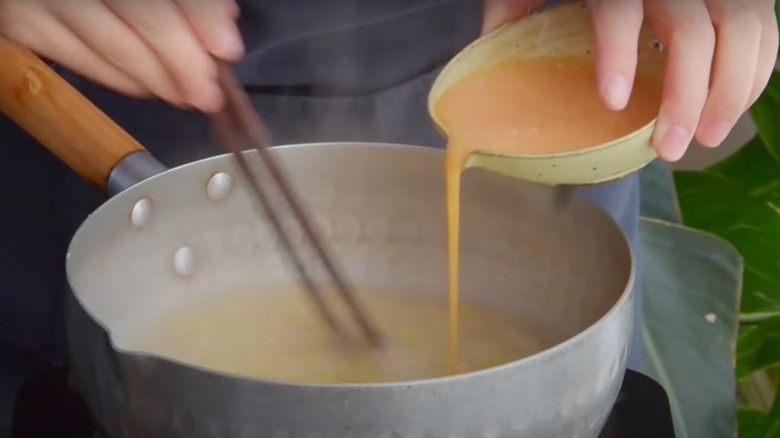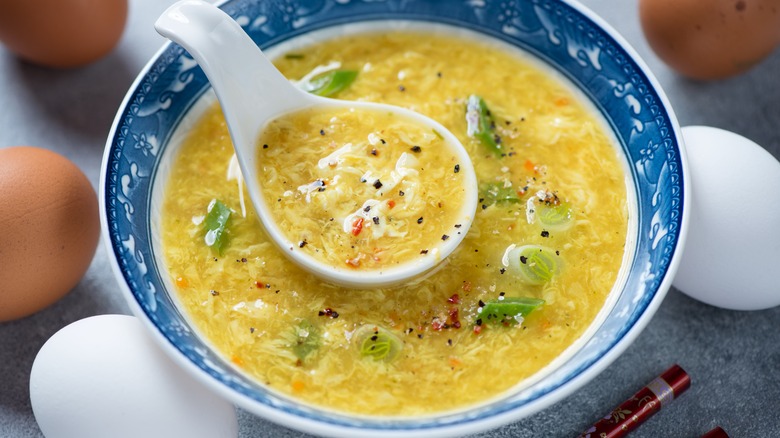The Simple Tip For Getting Perfect Egg Ribbons In Egg Drop Soup
Chinese food has been successful in America for a lot longer than you might think. Its popularity among Americans — not just immigrant communities, but the broader population — actually predates the Civil War, following Chinese immigration due to the allure of the gold rush. It makes sense; most Chinese dishes don't involve any particularly esoteric ingredients, meaning they can be made and enjoyed anywhere. And one of those time-old classic dishes everyone who's ever eaten at a Chinese restaurant will be familiar with is egg drop soup.
However, the soup can seem tricky to make at home, with the biggest issue people encounter being getting the egg ribbons to form properly. You've added the eggs to the broth, but they never form right, instead clumping in weird ways that are, shall we say, less than desirable. What gives? Well, it turns out you probably skipped over the single most important part of the process when properly preparing egg drop soup: Go slowly. No, slower than that. Really, really slow.
Going slow and whisking lets the egg turn into ribbons
To understand why adding your eggs to your egg drop soup slowly is so important, it's important to first understand what egg drop soup is. It's actually a pretty simple dish as far as ingredients go: Either chicken broth or vegetable stock punched up with some seasonings and a bit of corn starch, potato starch, or tapioca as a thickener, and then (obviously) eggs. What makes egg drop soup so unique and special is all down to texture — and that texture comes from the technique used to make it.
When you expose an egg to heat, it solidifies; that's one of the bedrock principles of cooking. With egg drop soup, meanwhile, you want your egg to solidify — but in a particular way to get the right texture. In order to get those signature ribbons, you have to pour your whisked eggs very, very slowly (but consistently) into the soup in a thin stream while whisking continuously. Use a whisk, or get authentic and stir continuously and fairly speedily with chopsticks. This allows the eggs to solidify a little bit at a time instead of forming one big clump, and the constant motion means they get swirled into ribbons. You can't get the classic look and feel of egg drop soup if you skip either the whisking or the slow-pouring parts of this process.
You can use egg substitutes for egg drop soup
But let's say you're vegan, and you still want to enjoy the delicious taste of egg drop soup. Can you use an egg substitute to create the same effect? The good news is you can. Obviously, you're going to want to use vegetable stock (or faux chicken stock), but the principle here works the same. Egg substitutes are formulated to function like eggs, meaning they solidify when hit with heat — and that's all you need to create the same effect as regular egg drop soup. You could also make your own substitute at home, though this is trickier; you'll need a combination of potato starch, chickpea flour, and nutritional yeast (along with salt) to really get an authentically egg-like taste and texture.
Whichever way you go with it, the key remains to let the egg (or egg-like substance) hit the bowl slowly while stirring the liquid in a circular motion. Just follow that simple tip, and you'll be preparing restaurant-quality egg drop soup at home in no time.


